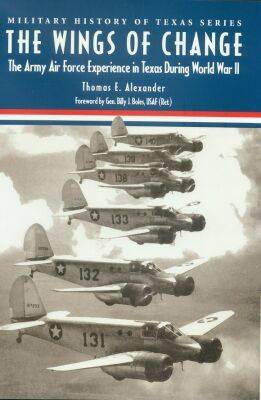On the brink of World War II, Texas was still largely a rural state, a closed society. Few chose to leave, and even fewer outsiders found any reason to enter. A frontier morality dictated adherence to strict moral guidelines regarding temperance, frugality, tolerance, fidelity, and moderation. Cultural activities and educational opportunities were limited. The state's economic situation was dire as a result of the Great Depression and persistent drought. President Franklin D. Roosevelt, needing to put unemployed men back to work and at the same time begin preparing for a looming war, called for building more than fifty thousand new military aircraft and training more than thirty thousand pilots to fly them. And that's when Texas began to change. In the next few years, sixty-five army airfields would be located in Texas, more than in any other state. Some citizens may have been troubled initially at the prospect of uniformed strangers trooping down their streets, perhaps up to all manner of nefarious deeds. Those concerns, however, were all but obscured by the reality of federal dollars flowing into citizens' pockets long empty and civic coffers all but bone dry. After the Japanese attack on Pearl Harbor in December 1941, a surging spirit of patriotism universally overcame any shreds of lingering doubt about the need not only to have the bases close by but to welcome military personnel to the community with open arms. The air force had come to Texas in a big way, and changes, as well as the wings of thousands of airplanes, were in the air, from Dalhart to Laredo and from El Paso to San Antonio.
- ISBN13 9781893114357
- Publish Date 21 April 2003
- Publish Status Active
- Publish Country US
- Imprint McWhiney Foundation Press
- Format Hardcover
- Pages 250
- Language English
